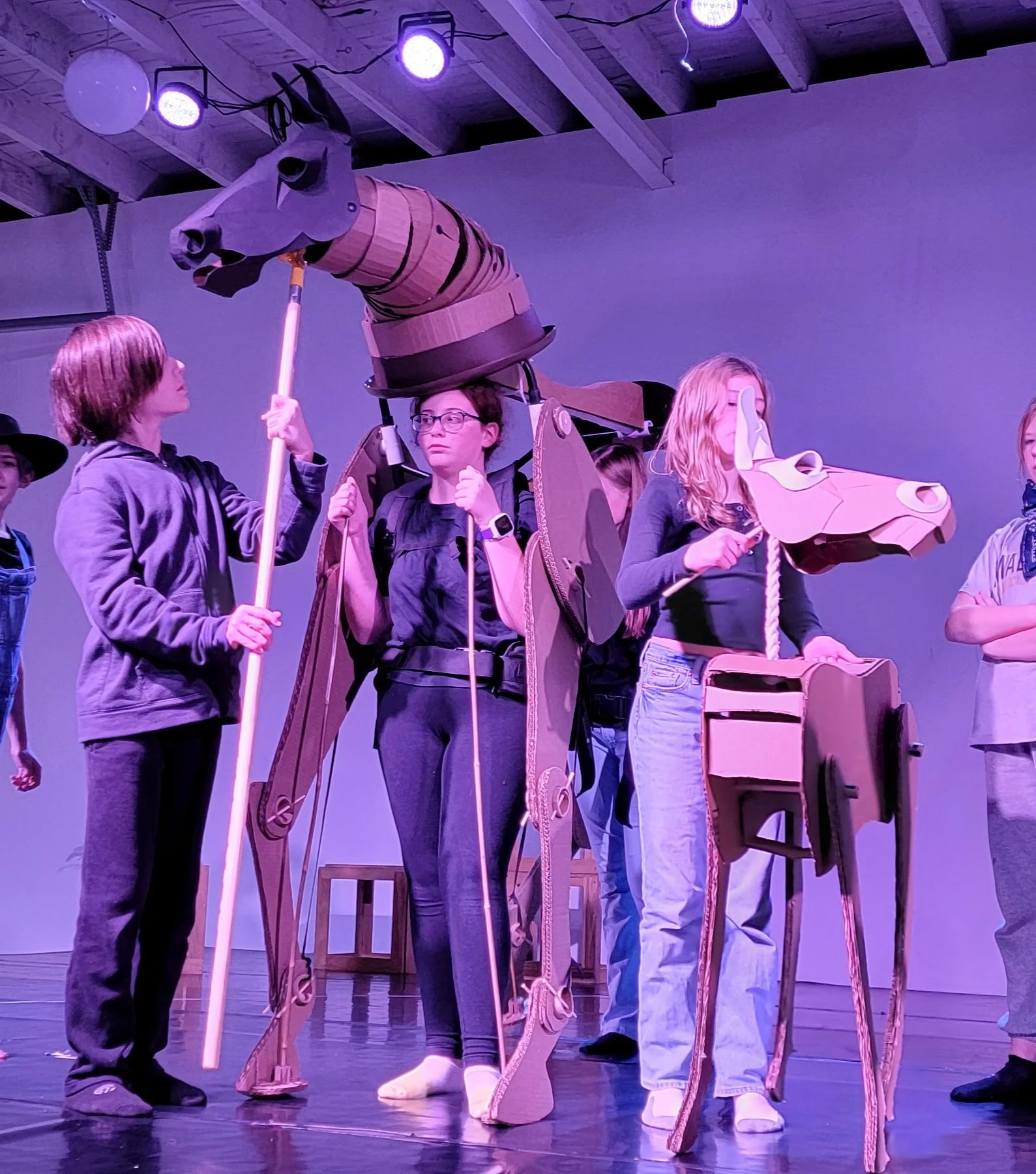Adapting for education
Students rehearse for Jess Noel’s adaptation of Misty of Chincoteague (PACK, 2022). Puppets by Kat Caro.
Adapting for Education: writing scripts for the classroom
Adapting for the theatre classroom is a muscle I love to work. It might be my favorite part of my job. While I enjoy being in the rehearsal room and creating with my students, I absolutely adore sitting at my desk and imagining stories that are perfect fits for them. I dream up dialog, and I can see each scene in my mind before we even start the rehearsal process. It’s such a pleasure to know who I’m writing for, and why, and often the ideas for my adaptations come like lightening strikes. BOOM! Suddenly I’m obsessed with a story, and there’s no stopping me from adapting it into a script.
Sure, it would be easier to order a packaged musical from MTI or Concord Theatricals. These are usually crowd-pleasers that everyone enjoys and can sing along to. But finding interesting, compelling things for a hundred students to do in a pre-packaged “Broadway Jr” or “School-version” show is almost impossible. I know many directors are able to scrape up parts for a huge student ensemble. But for me, I’d rather write my own adaptations for my students because it guarantees that each company member will have something important to say and do. I want every single one of my students, not just the lead players, to feel they are essential to the project. I’ve discovered the easiest way to ensure this is by writing my own scripts.
I enjoy taking an idea, concept, theme, or visual, and customizing it into a script for large groups of students. For example, adapting Marguerite Henry’s Misty of Chincoteague was born from a visual. During the summer of 2022, my IG feed was flooded with images of National Theatre’s production of War Horse where the company used life-size horse puppets manipulated by two or three ensemble puppeteers. The photos and video from this production were so inspiring, and I knew I wanted to attempt something like this with our young students. I’m lucky enough (so blessed) to work with production designer and brilliant puppet-maker, Kat Caro, who said she could absolutely build us a life-size horse. From this idea, the Misty of Chincoteague adaptation was born. I got to re-visit a classic from my childhood, and adapt the story into a dynamic script for my students, all with visuals in my imagination of a life-size horse puppet galloping across the stage. I had a lot of fun adapting Misty.
Sometimes, ideas for adaptations come from socio-political trends in current culture. I want to provide opportunities for my students to say important, relevant things with their art. Even though they are young, students are quite aware of headlines, policies, and important ideas, and they deserve the opportunity to meet the moment with purpose and intention. Oscar Wilde’s The Picture of Dorian Gray is one such adaptation where the message of our project, as well as the central themes, align with today’s social media trends (obsession with youth and beauty) as well as politics (cultural attacks on lbgtqia+ communities). Students feel empowered through opportunities in their art-making to discuss hard, contemporary truths. It’s exciting to watch teens excavate social-reform messaging from my scripts, and I think this might actually be the whole point of why I write in the first place.
Coming up: I recently signed an exciting use contract with a very prominent American novelist. He’s one of my favorite writers, and this is such a dream come true! I’ve obtained exclusive permission to adapt two of his stories for PACK’s Spring 2026 educational projects, and I can’t wait to share more. The ideas behind these adaptations came from a few inspirations (1) powerful female lead characters who use their minds to enact change (2) revenge (3) my continued obsession with fabric and shadows. Stay tuned! I’m so excited to share who the writer is….can you guess?
